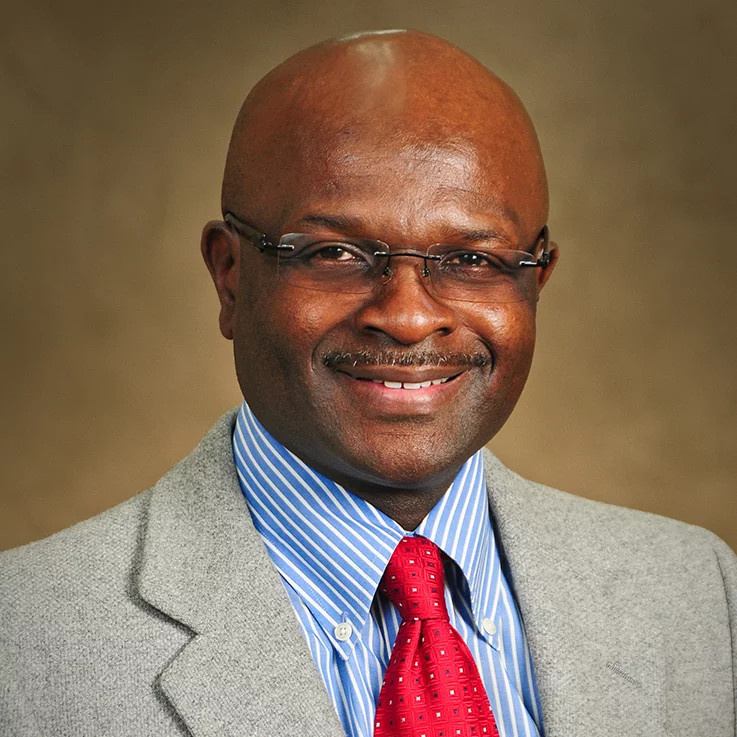By Betsy Finklea
The second session of the DCP3 2024 Economic Development Ambassador Program was held at the City of Dillon Wellness Center on April 17th.

Mayor’s Remarks
City of Dillon Mayor Tally McColl welcomed the group to the meeting. He said the doors of Dillon are open for business and the doors are open for residents. He said there is a need for ambassadors such as those in this session to promote the community. He said Dillon County Economic Development Director Rodney Berry has “had a lot of wins” and economic development was very competitive, very professional, and very impactful under his leadership.

Economic Development and Outreach
Bryan Braddock, the Economic Development and Outreach Director for Congressman Russell Fry, spoke about “connecting the dots.”
Braddock said his role is to connect the dots between economic development and community outreach. He said they need federal, state, and local governments working together. He wants to connect people to resources.
Braddock said Congressman Fry is going to be awarding some community enhancement grants. This helps to connect available federal money to the local communities. He said they were doing everything they can do to bring to the communities and to help them navigate the federal arena. He thanked Dillon County Economic Development Director Rodney Berry for the work he is doing in Dillon and the Pee Dee and for the work he has done his whole life. He said Berry was truly for the people of the PEe Dee and the rural counties.

PDRTA
Don Strickland, Director of Pee Dee Regional Transportation Authority (PDRTA), said PDRTA covers six counties in the Pee Dee Region. They currently have 38 fixed routes in the service area and this doesn’t include services like those to the Myrtle Beach area where they take people to work.
They have currently added new services such as the Chesterfield County Connect, Chesterfield Demand Response, the Pageland Express, the MUSC Black River Route, and the Hartsville Demand Response.
Demand Response is when one schedules their trip the day before, they pick the person up at their home, and take them to their destination.
In Dillon County, there is the DCAT Express and Connect, the Harbor Freight Tools, and Demand Response. He says they would like to do bus shelters in Dillon County that would benefit their riders and local students.
He said vanpools are coming soon which will consist of 5-14 passengers have the option to use the van pool to get to work every day. They are guaranteed to have a ride home in the event of an emergency.
PDRTA is 65 percent federally funded. The remainder of their funds includes 15 percent of state mass transit funds and the remaining 20 percent comes from local match funds.
They also offer park-n-rides in some area where one goes to a particular location and rides the bus from there.
The buses are ADA accessible. They have bike racks that will hold two bikes. All buses have six to eight surveillance cameras for driver and passenger safety.
PDRTA goes the extra mile to make sure their drivers are prepared. The drivers get certified in First Aid and CPR, Defensive Driving, Customer Relations, Managing Emergencies, Human Trafficking and Continuing e-learning.
PDRTA averages 33,000-40,000 trips a month. This has increased 25-27 percent in the past three years. in Dillon County, PDRTA makes 800 to 1000 trips a month to Harbor Freight Tools. This has helped reduce their turnover rate along with other factors.

Strickland, who was accompanied by his associate Will Johnson, said 52 percent of their fixed route riders in their service area are going to work. Some of the companies where PDRTA offers a dedicated demand response trip are Harbor Freight, Ruiz, Performance Foods, and Pepsi, and they are in conversations with Niagara and AESC.
PDRTA has also helped to provide medical access to patients by providing rides and has worked with the Darlington School District to provide rides to interns, etc.
Strickland noted that five counties have fare-free service including Dillon County.

S.C. Commerce
Gilleon Frieson, the Rural Development Manager for S.C. Commerce, gave a primer on economic development. Frieson said economic development was the process through which per capita income, tax revenue, and wealth are increased in a community by attracting investments and creating jobs. He said successful economic development improves the life of the community. He stressed that economic development was a process not an event.
Frieson said the first thing that one has to determine is the vision of the community. Do they want to grow? He said some communities are happy with the way things are now. If they do want to grow, what kind of growth do they want? Where do they want to grow, and do they want economic development?
There are three main economic development activities: 1) Recruiting New Industry, 2) Business Retention and Expansion, and 3) Developing New Industrial Product. He talked about what companies are looking for and the site selection process. He said companies are looking for “the optimal location where they can maximize return on investment with the minimal risk.”
Some of the site selection factors include the availability of a skilled workforce, proximity to major markets and suppliers, available land and buildings, infrastructure and utilities, quality of life and incentives. He said Inland Port Dillon is a big selling point for Dillon County.
Frieson also talked about incentives. He said while they are not the reason that a company chooses a location, they do have an impact on site selection. Incentives make a community competitive. He said some detractors don’t like incentives because they involve tax dollars.There are state and local incentives. State incentives include statutory (income tax credits, sales tax exemptions, and single factor apportionment; discretionary (grants, job development, credits, and workforce training). Local incentives are fee-in-lieu of taxes (FILOT) agreements, property tax abatements, special source revenue credits, multi-county industrial park destinations, and other discretionary incentives.
Grant funding can also be awarded for economic development through the Coordinating Council for Economic Development. These are ually for business retention and expansion and are performance-based grants. For example, an expansion provides jobs to a certain number of people, etc.
Another important factor in economic development is business retention and expansion. Frieson said existing industries account for nearly 70 percent of all new jobs that are created.
Frieson spoke about product development. He said products are industrial buildings, industrial sites, and industrial parks. They have to have all the utilities. Frieson stressed that a community “MUST” have product to be competitive.
Frieson said confidentiality is “very, very, very important” when it comes to economic development projects. He said many times the Economic Development Director has to sign a non-disclosure agreement. He said it can be detrimental to a project if confidentiality is violated. Frieson said project have been lost due to confidentiality violations.
The future of economic development involves technological advancements, an evolving workforce profile, flexible incentives, globalization, sustainability, geopolitical dynamics, and uncertainty. He said South Carolina is growing and last year led the country in growth with 1.7 percent.

SC PORTS
Travis Frank, who is with Business Development at the SC Ports Authority, was the next to speak. He said Charleston is their main hub, and they have inland ports in Dillon and Greer. Harbor Freight Tools is the largest customer for Inland Port Dillon. They also export a large number of agricultural products from Inland Port Dillon including timber/logs, etc. Some of the SC Ports partners include Target, BMW, Bosch, International Paper, GE, Volvo, First Solar, Chevron Phillips, Michelin, Lowe’s, Walmart, Samsung, adidas, and others. Frank said Charleston was number eight in the top 10 performing ports in the country. He said they pride themselves on operational excellence. He said if a container arrives in Charleston by 1 p.m., it will be in Dillon by 8 a.m. There is an 8.6 minute truck turnaround at Inland Port Dillon. He said the use of Inland Port Dillon is a great way to reduce the carbon footpinrt and causes a big reduction in greenhouse gas emission. He said the growth in the ports business is coming from the Asian countries.






